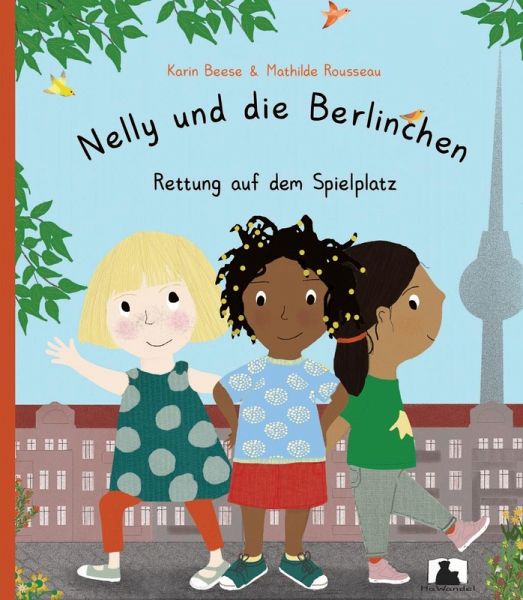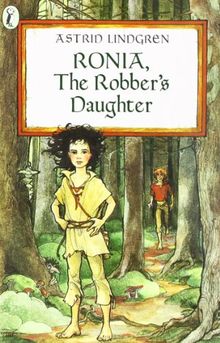In Conversation with Karin Beese, Author of the Nelly und die Berlinchen Series
 |
| In 2019, 'Treasure Hunt', the second book of the Nelly series, was released. |
Karin Beese
grew up in Sachsen, Germany.
She studied Communications and Mathematics in
Dresden. Beese has worked in environmental politics and development for many years
and currently lives and works in Benin (since October 2019).
She is the founder of the HaWandel Label
and has worked with producers in Cameroun to create a fair and transparent
pricing system for their products. She is the mother of three girls and her
interests include diversity and empowerment, global justice and sustainable environments.
The author was kind enough to answer the questions below and talk about her first experience as a writer of children's books. I have previously discussed her first Berlinchen book in one of my earlier blog posts entitled 'Being Different being me' which you can read here.
Can you please introduce the Nelly und die Berlinchen series to our readers?
Can you please introduce the Nelly und die Berlinchen series to our readers?
Nelly und die Berlinchen is a Berlin-based imaginative picture book series. Pre-schoolers can immerse themselves in the everyday adventures of the three friends Nelly, Amina and Hannah. Written in verse, the Berlin girls are never out of ideas. They have fun, disagree but always work out their problems together. The books present non-discriminatory diverse illustrations with special attention to skin colour, religion and family structures. They focus on friendship, family and the environment in the lives of children and bring a smile to the faces of parents and older siblings.
You crowdfunded and self-published the books. Why?
You crowdfunded and self-published the books. Why?
We crowdfunded the printing of both our Berlinchen books. We first wrote to big publishing houses but waited for months without a reply. What’s more, we had heard that publishers sometimes quite heavily influence the book’s layout and we really wanted to maintain our independence. That’s the reason I started my own small publishing house, HaWandel. It was actually quite simple but of course, a great risk as well. I had to self-finance the printing of the first edition of the first Berlinchen book. The positive feedback from the crowdfunding initiative was very encouraging and I rounded this off with my private savings to finish the project.
What was the reception of your two books like?
The feedback for both Nelly und die Berlinchen books has really surpassed our expectations. Even now, four years after the first publication, we still regularly receive mails or online reviews of our first book and people all over Germany thank us for creating it – parents joke about being sick of reading the story to their kids or we hear from grandparents who are grateful for having finally found the perfect birthday present for their grandkids. We also receive quite moving responses, like that of a mother whose daughter can’t get enough of the book because there is finally a father in it who looks like hers! Our experiences through reading presentations also help us appreciate how differently kids relate to the individual characters of the book. We intentionally created open characters. In the second book of the series, the mother of one of the Berlin girls is pictured together with another woman. While for some kids it is obviously the grandmother, for others it is clear that it’s the mother’s girlfriend. That’s the beauty of the two Nelly und die Berlinchen books – children have a lot of room to use their imagination and creatively identify with the characters.
Why do you think there are so few Black protagonists in German picture
books? Is there opposition from publishing houses?
To be honest, I really cannot say. You could reach that conclusion when you look at the books out there. On the other hand, established publishers choose on average one out of every 200 book propositions and I have no idea how many authors create books with Black protagonists. There is definitely not enough of such books and it is very important that more authors create them and customers explicitly request them. In the last few years, I have received requests from authors asking if I could also publish other books with very diverse characters. That was not originally my plan but I certainly can see myself doing it. But it should be books like Nelly und die Berlinchen - creative stories which reflect diversity in the everyday lives of children and not books that ‘explain’ that we are indeed all equal. I believe a lot of new books are being created at the moment and I would be happy to work with the authors.
To be honest, I really cannot say. You could reach that conclusion when you look at the books out there. On the other hand, established publishers choose on average one out of every 200 book propositions and I have no idea how many authors create books with Black protagonists. There is definitely not enough of such books and it is very important that more authors create them and customers explicitly request them. In the last few years, I have received requests from authors asking if I could also publish other books with very diverse characters. That was not originally my plan but I certainly can see myself doing it. But it should be books like Nelly und die Berlinchen - creative stories which reflect diversity in the everyday lives of children and not books that ‘explain’ that we are indeed all equal. I believe a lot of new books are being created at the moment and I would be happy to work with the authors.
How would you describe the current situation of racism and discrimination
in Berlin/Germany?
Racism and discrimination are big problems in Germany and also in many
other countries. There are of course local and regional differences but the
underlying difference is really whether racism is more direct or indirect.
Black people and People of Colour are considerably affected, as a result. Many
families I know, for instance, carefully consider their holiday destinations
because they want to feel comfortable and safe where they travel without being
constantly stared at. There are of course also positive trends in politics and increasing
numbers of individuals and companies that are actively engaging with diversity
and intersectionality. At the same time, the discussion continues to overwhelm
a lot of people and therefore the gap between an engaged discussion and its
rejection is becoming wider.
What is needed, in your opinion, to advance the debate here? What role can
children’s books play?
We need to become more actively engaged in showing and reflecting what real
diversity in Germany and Europe could look like on the ground, in everyday
situations – in television, in the news, in cinema and also in children’s
picture books. We unfortunately continue to see the same stereotypes being
reproduced. One of my daughters once asked me whether women or dark-skinned
people could also be police officers. I immediately went in search of picture
books with Black or female police officers, which in Germany, is almost
non-existent.
Kids love books and books influence at a very young age how kids perceive
the world. This is why diverse characters aren’t only important in empowering Black
kids or Children of Colour but also white kids. When I identify with a brave,
sporty girl in a book and her mother wears a head scarf, the next time I see
such a girl at the playground, I would also want to get to know her instead of
being sceptical. It is also important that diverse characters are not always
presented as perfect or always doing the right thing. Diversity is not ‘good or
bad’ but simply normal.
 |
| 'Saving Teddy', the first book in the series, was published in 2016 |
And finally, what is your favourite children's book?
Der kleine Angsthase - The little scared rabbit (Angsthase also means scaredy-cat). I’ve
loved this book since I was a child! It is comforting to see how the little rabbit
overcomes his fear and even protects his small friend from the fox. It is
nonetheless a pity that he first has to be a ‘hero’ before he is accepted by
the other rabbits. What’s funny is that our youngest daughter identifies with the
fox and doesn’t like it when he is chased out at the end. It is great when a
picture book presents different characters you can identify with or where
children can put themselves in the shoes of others.



